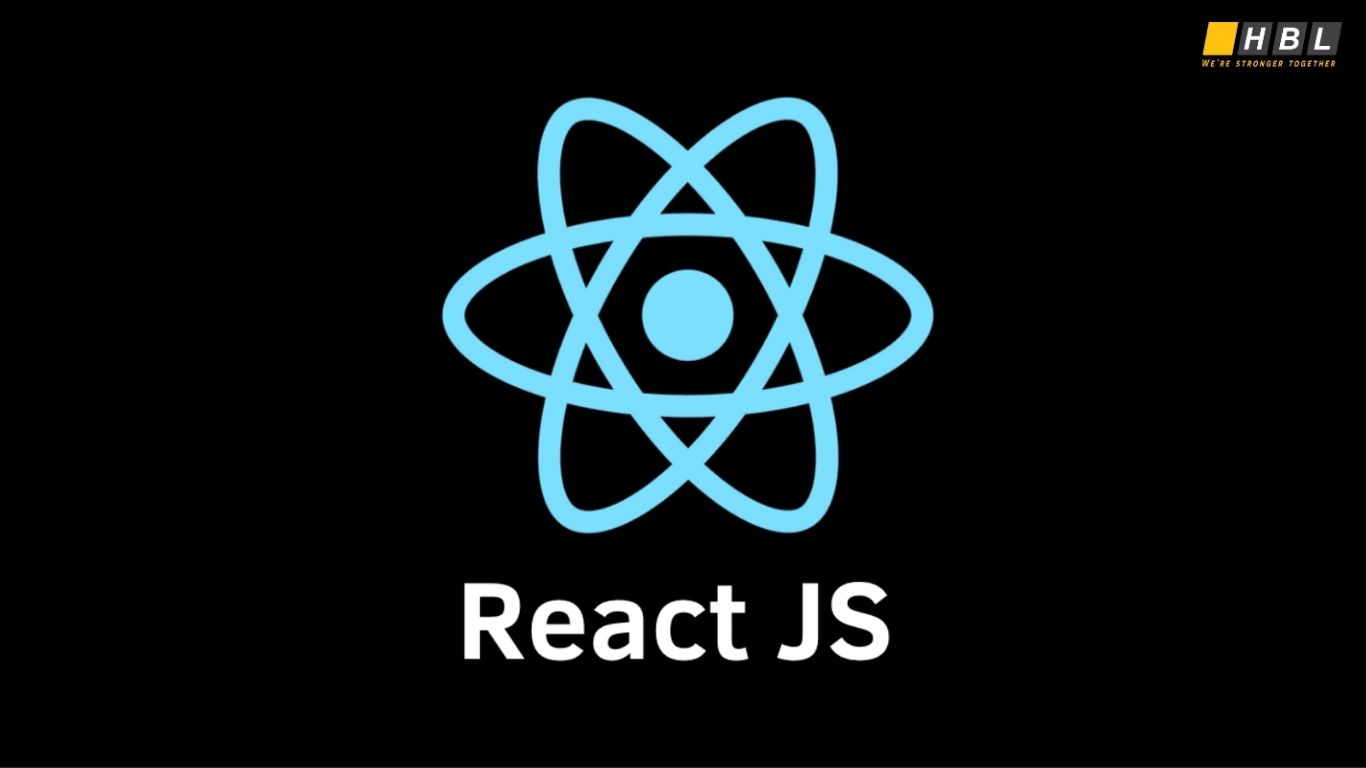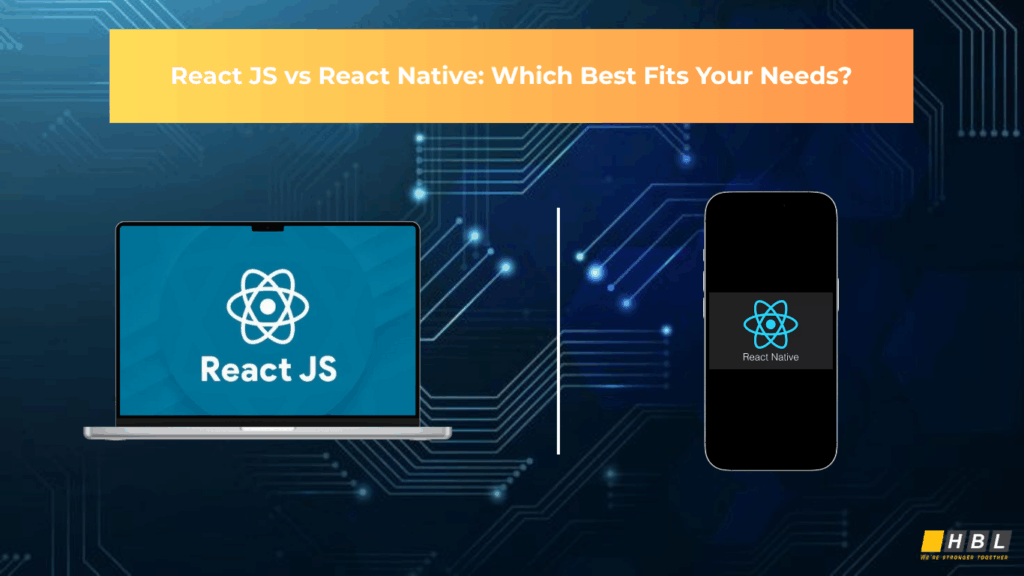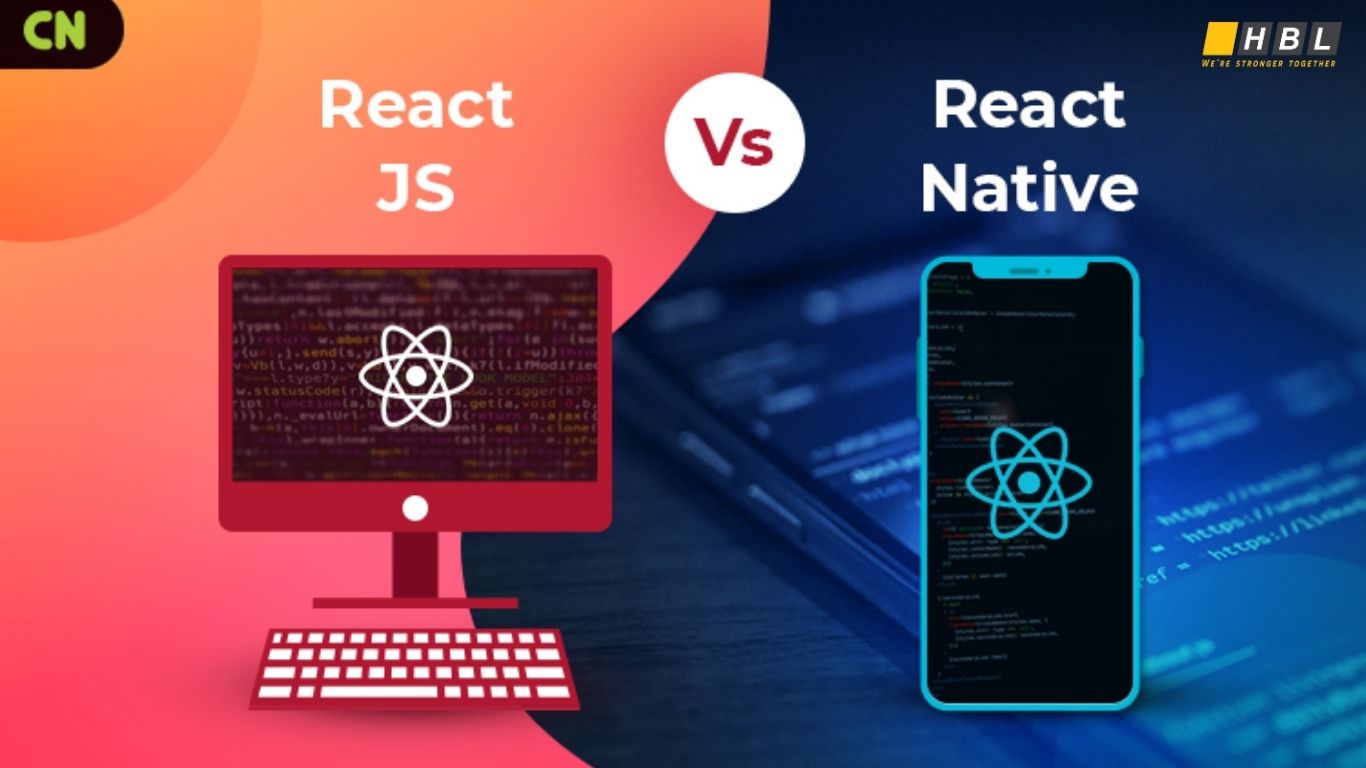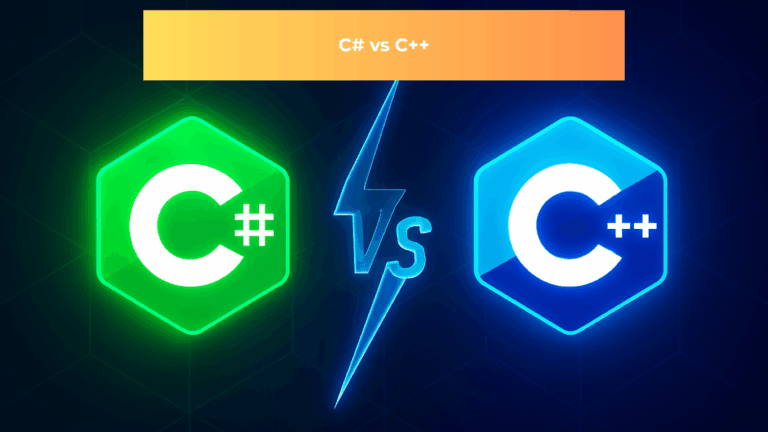In today’s fast-paced digital landscape, selecting the right tech stack is crucial to a project’s success. Among the most common decisions is choosing between React JS and React Native – each impacting performance, user experience, development costs, and time-to-market.
Making the wrong choice can result in costly delays, budget overruns, or even a complete overhaul of your product.
In this article, we break down the key differences between React JS and React Native, exploring their core features, ideal use cases, and the pros and cons of each. Our goal is to help businesses make a well-informed decision that aligns with their product goals and technical needs.
II. What is React JS?
React JS is a robust JavaScript library created and maintained by Meta (formerly Facebook). Since its release in 2013, it has gained significant popularity as a go-to solution for developing fast, scalable, and interactive user interfaces (UIs) for modern web applications.
What sets React JS apart is its developer-friendly approach—allowing the creation of reusable UI components that efficiently update and render in response to data changes. This leads to improved performance and streamlined development workflows.

Key features
React JS offers several features that make it a go-to choice for front-end developers around the globe:
- Component-Based Architecture: Applications are divided into small, reusable components, allowing better code organization, maintainability, and scalability.
- Virtual DOM: React uses a virtual representation of the DOM to minimize direct manipulation, resulting in better performance and faster rendering.
- Declarative Syntax: Developers can describe what the UI should look like for different states, making the code easier to read and debug.
- Integration-Friendly: React JS works seamlessly with other tools and frameworks such as Redux for state management and Next.js for server-side rendering and routing.
Real-world use cases
React JS is trusted by many leading global companies to power their high-traffic web applications. Some notable examples include:
- Facebook Web: Developed by the original team behind React, Facebook continues to use it extensively to power its web interface.
- Netflix: Utilizes React to enhance loading times and deliver consistent performance across a range of devices.
- Airbnb: Adopts React to create responsive and engaging user experiences for travelers and hosts alike.
- Dropbox: Integrates React into its platform to streamline file navigation and improve the overall user interface.
-> With its blend of simplicity, flexibility, and high performance, React JS remains an excellent choice for businesses aiming to build robust and user-centric web platforms.
III. What is React Native?
React Native is a widely-used open-source framework developed by Meta (formerly known as Facebook), enabling developers to create mobile apps for both Android and iOS platforms using a single codebase based on JavaScript and React. First introduced in 2015, it brings the flexibility of React to the mobile ecosystem, enabling cross-platform development with native-like performance.
By blending React’s declarative UI approach with native mobile components, React Native empowers development teams to deliver efficient, user-friendly apps while reducing time-to-market and development overhead.

Key features
React Native has become a favorite among both developers and enterprises thanks to its standout features:
- Cross-Platform Efficiency (“Build Once, Deploy Anywhere”): By using a unified JavaScript codebase, teams can launch apps on both iOS and Android platforms, cutting down significantly on time-to-market and overall development expenses.
- Native UI Components: React Native bridges JavaScript and native modules, allowing apps to use platform-specific UI elements for a smooth, responsive user experience.
- Hot Reloading: Developers can instantly view code changes without rebuilding the entire app, boosting development speed and enabling rapid iteration.
- Large Community & Ecosystem: A vast collection of libraries, community support, and third-party plugins help streamline app development.
Real-world use cases
React Native is trusted by many leading tech giants and enterprises to power their mobile applications, thanks to its scalability and flexibility:
- Facebook App: As its origin project, Facebook uses React Native in several parts of its mobile application.
- Instagram: Migrated parts of the app to React Native to allow code sharing between platforms.
- Walmart: Integrated React Native to enhance app performance and streamline development across platforms.
- Bloomberg: Built their new mobile app using React Native, enhancing both development speed and UI consistency.
React Native continues to be a preferred choice for startups and enterprises aiming to build cost-effective, high-performance mobile apps without managing two separate codebases.
IV. Key Differences Between React JS and React Native
| Criteria | React JS | React Native |
| Platform | Web | Mobile (iOS & Android) |
| Target use | Web UI | Mobile apps |
| Performance | Optimized for browsers | Near-native performance |
| SEO capability | Good (especially with Next.js) | Not SEO-friendly |
| Code reusability | Web only | 70–90% shared between platforms |
| Styling approach | CSS/SCSS | Inline styles |
| Community & libraries | Mature and large | Fast-growing but smaller |
V. Pros and Cons
React JS
React JS is a JavaScript library primarily used for building dynamic and interactive user interfaces for web applications. Here are its major advantages and limitations:
Pros of React JS
- Ideal for Complex Web Applications: React JS is perfect for building scalable and maintainable single-page applications (SPAs), dashboards, content management systems (CMS), and data-driven platforms.
- Rich Ecosystem & Strong Community: Backed by Meta and a vast developer community, React JS benefits from continuous updates, reusable component libraries, and strong documentation.
- Good SEO Potential: With frameworks like Next.js or Gatsby, React JS can enable server-side rendering (SSR) and static site generation (SSG), improving crawlability and search engine rankings.
Cons of React JS
- Not Suitable for Mobile Apps: React JS is designed for web platforms and cannot be used to build native mobile apps.
- SEO Optimization Needs Extra Setup: While tools like Next.js help, achieving full SEO optimization often requires additional configuration, especially for dynamic content.
React Native
React Native is a cross-platform framework used to build native-like mobile applications for Android and iOS using a shared JavaScript codebase.
Pros of React Native
- Single Codebase Across Platforms: One of React Native’s most attractive features is the ability to write code once and deploy it across both Android and iOS, reducing effort and costs.
- Faster Time-to-Market: With code reusability and hot reloading, development cycles are shorter, making it ideal for MVPs and startups.
- Better Performance than Hybrid Frameworks: React Native uses native components, offering smoother performance than traditional hybrid tools like Cordova or Ionic.
Cons of React Native
- Challenging Native Module Integration: When deep platform-specific functionality is needed (e.g., camera, GPS, Bluetooth), bridging with native modules may require knowledge of Swift, Java, or Objective-C.
- Platform-Specific Debugging: Despite having one codebase, debugging may still require testing and understanding of both iOS and Android environments.
VI. When Should You Use React JS or React Native?
Use React JS if:
- You’re building a responsive web application, admin dashboard, CMS, or marketing site.
- SEO is a priority, React JS, combined with SSR frameworks, can help your content rank well on Google.
- You already have a team familiar with frontend and backend web technologies, like HTML, CSS, JavaScript, and REST APIs.
Use React Native if:
- Your project demands a mobile app that runs seamlessly on both Android and iOS platforms.
- You aim to accelerate development while keeping costs under control by reusing most of the codebase.
- Your application doesn’t heavily depend on complex native functionalities or hardware-specific integrations.
VII. HBLAB’s Experience with React Technologies
What HBLAB offers:
- You’re planning to develop a mobile app for both Android and iOS without maintaining two separate codebases.
- You want to streamline the development process and minimize expenses, making it ideal for startups or Minimum Viable Products (MVPs).
- Your application doesn’t rely heavily on advanced native functionalities, or you’re open to integrating native modules when necessary.

Sample case studies:
Case Study: Digital Content Platform for Japanese EdTech Company
- Challenge: The client wanted to create an intuitive and scalable digital learning platform that offers real-time quizzes and video lessons for primary to high school students.
- Solution: HBLAB provided a dedicated development team using React JS for the frontend and Node.js for the backend. We also integrated Firebase for real-time features and ensured the product was mobile-responsive.
- Result: Reduced development time by 35% and enabled the client to launch the MVP in just 3 months.
Case Study: Mobile Learning App for Singapore-based Startup
- Challenge: The startup needed a cross-platform mobile application with offline capabilities and minimal maintenance costs.
- Solution: HBLAB developed the app using React Native, allowing the client to use a shared codebase for both Android and iOS. We also integrated it with LMS back-end APIs for seamless content management.
- Result: Saved 40% in development costs and achieved over 10,000 downloads within the first month of launch.
VIII. Conclusion
Final thoughts
Choosing between React JS and React Native is not just a technical decision, it’s a strategic one. While React JS excels at delivering robust web applications with strong SEO capabilities, React Native shines when it comes to rapid mobile development across platforms.
By aligning your choice with your business goals, you ensure a higher ROI, faster time-to-market, and a better user experience.
Call to Action
Looking for an experienced IT outsourcing partner to bring your React-based project to life?
At HBLAB, we have successfully delivered over 300 projects in EdTech, Fintech, E-commerce, Logistics, and more using React JS and React Native. Our team of 200+ developers is fluent in English and well-versed in global tech standards.
👉 Contact us today for a free consultation and discover how we can help you scale your next web or mobile application – on time and within budget.
See more:
– C# vs C++: Ignite Innovation and Performance with the Right Development Choice
– The Future of Rust Programming Language: Unleashing a New Era in Tech





